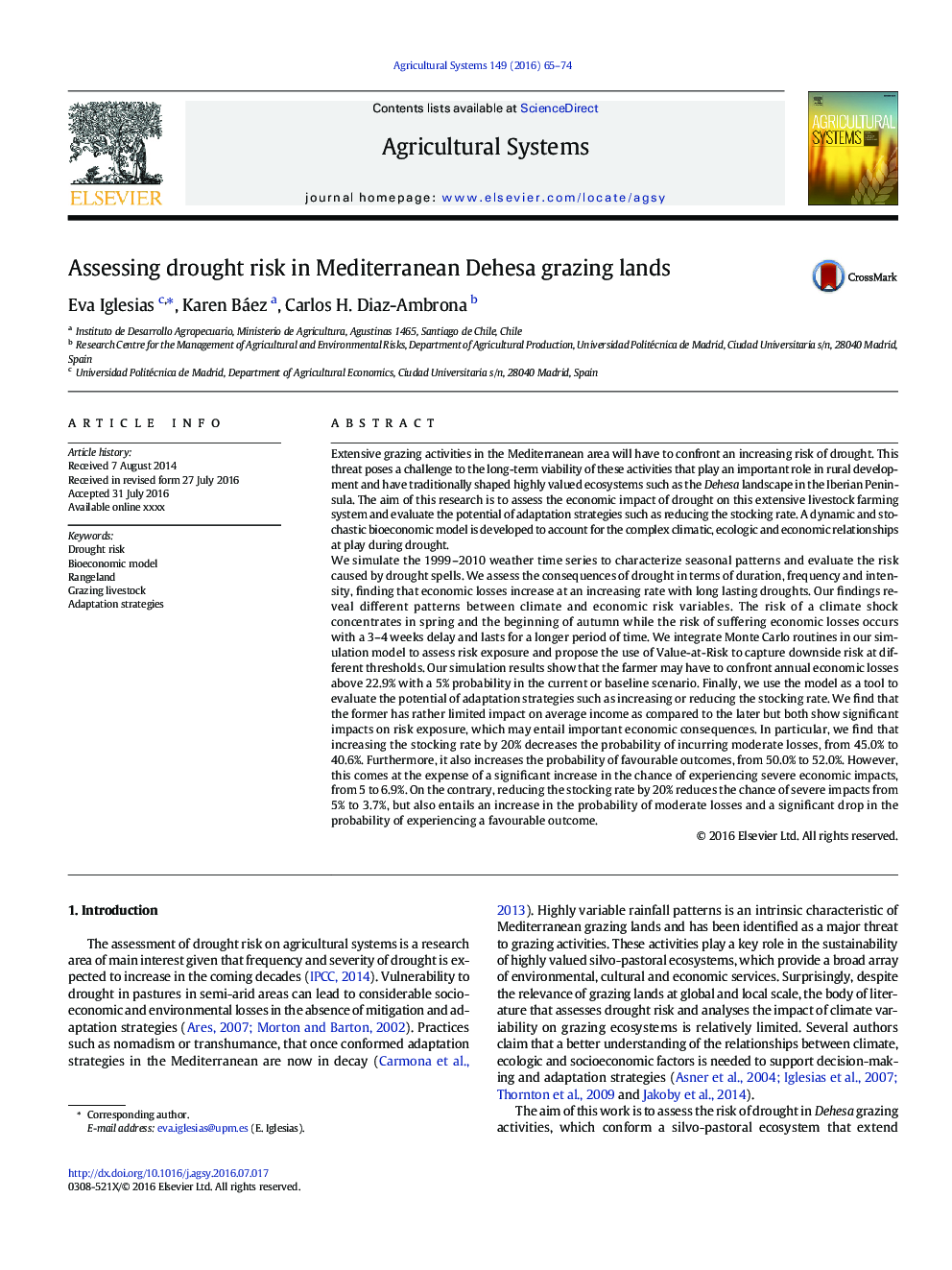| کد مقاله | کد نشریه | سال انتشار | مقاله انگلیسی | نسخه تمام متن |
|---|---|---|---|---|
| 6368240 | 1623221 | 2016 | 10 صفحه PDF | دانلود رایگان |
عنوان انگلیسی مقاله ISI
Assessing drought risk in Mediterranean Dehesa grazing lands
ترجمه فارسی عنوان
ارزیابی خطر خشکسالی در مناطق خشکی دریای مدیترانه
دانلود مقاله + سفارش ترجمه
دانلود مقاله ISI انگلیسی
رایگان برای ایرانیان
کلمات کلیدی
خطر خشکسالی، مدل بی بی اقتصادی، مراتع، گاو دام استراتژی های سازگاری،
موضوعات مرتبط
علوم زیستی و بیوفناوری
علوم کشاورزی و بیولوژیک
علوم کشاورزی و بیولوژیک (عمومی)
چکیده انگلیسی
We simulate the 1999-2010 weather time series to characterize seasonal patterns and evaluate the risk caused by drought spells. We assess the consequences of drought in terms of duration, frequency and intensity, finding that economic losses increase at an increasing rate with long lasting droughts. Our findings reveal different patterns between climate and economic risk variables. The risk of a climate shock concentrates in spring and the beginning of autumn while the risk of suffering economic losses occurs with a 3-4Â weeks delay and lasts for a longer period of time. We integrate Monte Carlo routines in our simulation model to assess risk exposure and propose the use of Value-at-Risk to capture downside risk at different thresholds. Our simulation results show that the farmer may have to confront annual economic losses above 22.9% with a 5% probability in the current or baseline scenario. Finally, we use the model as a tool to evaluate the potential of adaptation strategies such as increasing or reducing the stocking rate. We find that the former has rather limited impact on average income as compared to the later but both show significant impacts on risk exposure, which may entail important economic consequences. In particular, we find that increasing the stocking rate by 20% decreases the probability of incurring moderate losses, from 45.0% to 40.6%. Furthermore, it also increases the probability of favourable outcomes, from 50.0% to 52.0%. However, this comes at the expense of a significant increase in the chance of experiencing severe economic impacts, from 5 to 6.9%. On the contrary, reducing the stocking rate by 20% reduces the chance of severe impacts from 5% to 3.7%, but also entails an increase in the probability of moderate losses and a significant drop in the probability of experiencing a favourable outcome.
ناشر
Database: Elsevier - ScienceDirect (ساینس دایرکت)
Journal: Agricultural Systems - Volume 149, November 2016, Pages 65-74
Journal: Agricultural Systems - Volume 149, November 2016, Pages 65-74
نویسندگان
Eva Iglesias, Karen Báez, Carlos H. Diaz-Ambrona,
